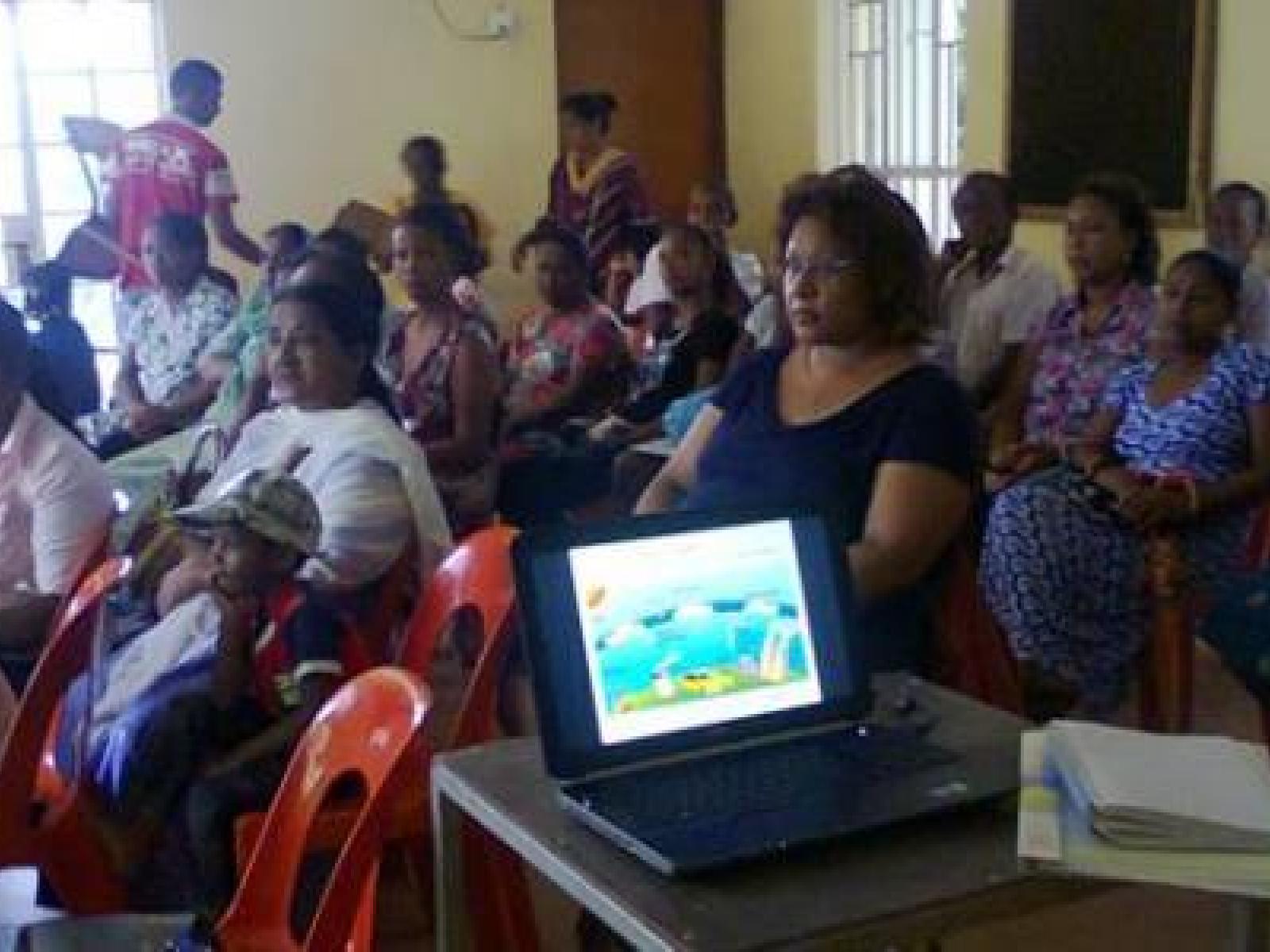An Overview Of Our Solution
- Population Impacted:
- Continent: Africa
Address
Royal Road
Grand-Sable,
United States
Population impacted
Size
___
Major Occupations
Local resources the community depends on, and for what purpose
Local threats to resources
Climate Hazards
Level of sensitivity
Level of adaptive capacity
The Vulnerability Reduction Assessment (VRA) was carried out to assess the current and future vulnerabilities and climate change risks of the Grand Sable community. The VRA analysis was based on four indicators which are: 1. Vulnerability of livelihood/welfare to existing climate change and/or climate variability 2. Vulnerability of livelihood/welfare to developing climate change risks 3. Magnitude of barriers (institutional, policy, technological, financial, etc) barriers to adaptation. 4. Ability and willingness of the community to sustain the project intervention 25 women of the association answered all questions on a scale of 1 to 5 [1: very serious; 2: serious; 3: moderate; 4: not so bad; 5: no problem], generating a numerical score, as well as other qualitative data based on the discussions leading to the eventual score of 1.88. The results of this assessment have helped to formulate an adaptation strategy for this community. The length of implementation of the project is 2 years. Progress of the project is monitored closely by the project manager and the funding agencies.
Ecological Costs
Ecological Benefit
Economic Indicators used to measure benefit
- Skills gained on the plantation of various crops which are appropriate in this region - Pressure on land was reduced
Community/Social Cost
Community/Social Benefit
Community/Social Indicators used to measure benefit
Economic Cost
Number of members of the association attending meetings and training workshops
Economic Benefit
Increase in expenditure and standard of living
Ecological Indicators used to measure benefit
Additional income generated
What were/are the challenges your community faced in implementing this solution?
- No. of women employed - Household expenditure
Describe the community-based process used to develop the solution including tools and processes used
the women should be empowered so that they could take appropriate actions to adapt to the effects of climate change and sustain their livelihoods.
Climate hazard of concern
How does your solution reduce the exposure of and buffer/protect the ecosystem affected?
Other
How has your solution increased the capacity of the ecosystem to adapt to potential climate changes?
The topsoil is sensitive to heavy rainfall as it is washed away and thus adds pressure to the land which has to be replenished with fertilizers and other minerals to maintain healthy growth of the crops.
How does your solution reduce the exposure of and buffer/protect the communities affected?
The vetiver root system is known to be massive, deep, penetrating, tough, and very fine. This characteristic of Vetiver provides an extremely strong anchor to the soil, which will be useful for soil erosion control. Compost will improve the soil texture and retain moisture and thus withering of crops during periods of drought will be reduced.
How does your solution reduce the sensitivity of the communities affected?
The farmers will be able to sustain their livelihood and the other women who were unemployed will be able to earn a living.
How has your solution increased the capacity of local communities to adapt to potential climate changes?
The women community will get an additional income and they will not suffer losses easily due to crop damage during periods of flooding and drought.
Can this solution be replicated elsewhere?
Conflict and lack of team spirit among the members of the Association was noted. The members were encouraged to take ownership of the project and to share the benefits of the project. The potential risks associated with this solution are: ? Poor weather conditions
